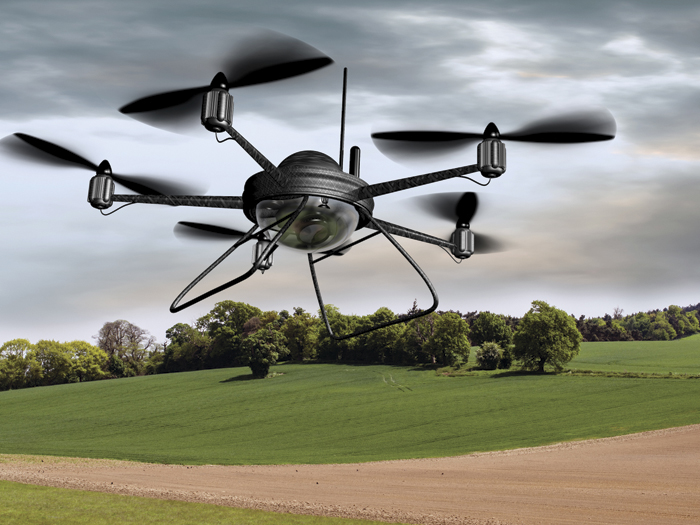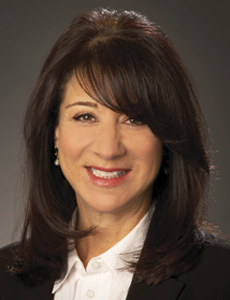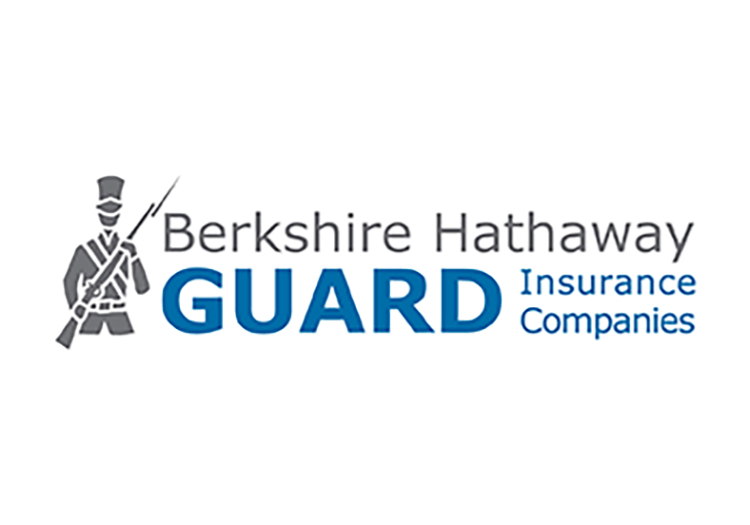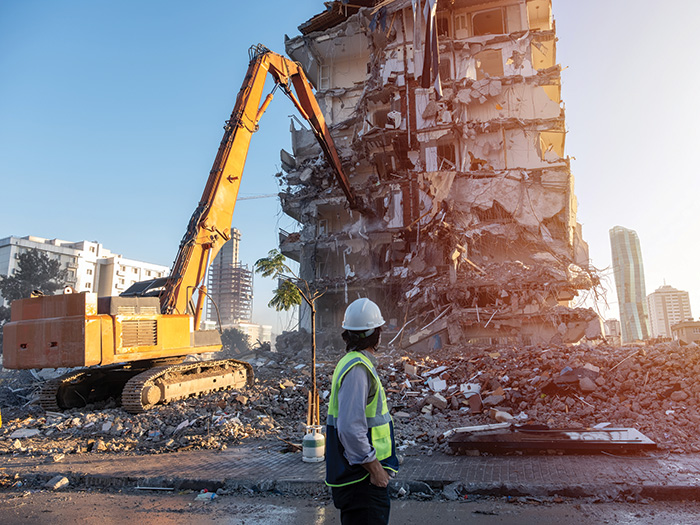Unmanned Risk
Rise of the Drones

An unmanned aircraft flies over a raging forest fire, alerting firefighters to where the blaze is most dangerous; another hovers over a construction site conducting a building inspection; and a third sweeps through a neighborhood taking photographs that showcase the exterior and interior of a home listed for sale.
While this may sound like some sci-fi movie scene set in the future — it’s not. The use of flying robotics in the form of small unmanned aircraft systems (UAS), also known as drones, is not only happening now, its commercial growth is predicted to significantly increase over the next 10 years.
However, in implementing these new UAS-related business opportunities, a multitude of insurance liability and coverage issues must be addressed, ranging from personal injury and invasion of privacy to aerial surveillance and data collection.
An Expanding Market
The Federal Aviation Administration (FAA) has determined that small UAS are “currently the most dynamic growth sector within the aviation industry.” By 2020, it is estimated that about 30,000 small unmanned aircrafts will be used for all types of business purposes. Currently, the FAA has allocated $63.4 billion for the modernization of the country’s air traffic control systems as well as an expansion of airspace to accommodate the commercial use of UAS.
Total spending for small unmanned aircraft systems worldwide is expected to reach $89.1 billion over the next 10 years.
For added perspective on the growth of this industry, the Teal Group’s 2012 market study forecasts that total spending for UAS worldwide is expected to reach $89.1 billion over the next 10 years, including strong military and commercial demand. The FAA also asserts that civil UAS markets will continue to grow even with the current regulatory constraints. However, once these constraints are modified, commercial markets will quickly develop, and demand for additional UAS and ancillary services will be created. The FAA estimates that this will translate into approximately 7,500 commercial UAS being viable at the end of five years.
An Overview
For commercial operations, the FAA has approved two flying robotics models; both of which weigh less than 55 pounds and measure four and half feet long. Prior to this, the only way the commercial/private sector could fly an unmanned aircraft in U.S. airspace was with an experimental airworthiness certification.
These small crafts enjoy two distinct features not shared with the aviation marketplace: (1) they are unmanned, having no human pilot/operator onboard, and (2) they are remotely operated by a pilot using data link transmissions.
In addition, these UAS have the ability to house high-powered cameras, infrared sensors, facial recognition technology, and license plate readers. For example, Halstead Property located in Darien, Conn., has been using aerial robotic cameras in its real estate business for almost four years to showcase home listings. The first in the state to use this technology, the company was recently featured on the “Today” show in a demonstration of how images can be captured remotely and then posted on the Internet, showing a home from both inside and out. The use of the technology has increased Halstead’s online listings views by more than three times and clients are impressed by the company’s progressive marketing efforts and use of cutting-edge technology.
Integration By Late 2015
Congress has tasked the FAA with integrating UAS into the national airspace system by late 2015. This accelerated time frame requires the FAA to quickly develop a comprehensive plan focused on the safety of UAS technology as well as operator certification. To meet these objectives, the FAA, in March 2012, created a new UAS integration office which brings together specialists from the aviation safety and air traffic organizations.
In attempting to integrate this new generation of commercial flying robotics, it is clear that the FAA is facing a variety of complex operational, procedural and technological challenges. Specifically, the FAA must develop effective policies and standards addressing the following issues: increasing UAS capacity, efficiency and predictability while enhancing safety; operating globally; creating a flexible paradigm for airspace uses; and mitigating congestion with a concern for protecting both safety and the environment.
Additionally, there are a host of related legal issues that will arise with the introduction of UAS in the skies. Such concerns include whether a property owner may protect his property from a trespassing drone; stalking, harassment, and other criminal laws that could be related to drone use; the applicability of airspace ownership laws; concerns over invasion of privacy and spying; and the extent to which federal aviation law trumps state law.
In 2013, the Drone Aircraft Privacy & Transparency Act was introduced to create a regulatory scheme for the private use of drones, including privacy protection, data collection and enforcement.
Carriers are developing policies to cover exposures, but there is little clarity or guidance in this area.
A Myriad of Challenges
In addition to regulatory and legal challenges, there are a myriad of complex liability and coverage issues related to insuring the use of commercial UAS. Surely, the operation of flying robotics will not be as orderly as presented in “The Jetsons” with all kinds of new and serious problems arising over such things as airspace procedures, types of accidents, and inadvertent eavesdropping.
Carriers are currently in the process of developing policies to cover insurance exposures presented by these small unmanned aircrafts, yet there is little clarity or guidance in this area.
However, even with the current lack of UAS insurance “experts” or private UAS claims, it is clear that two particular issues are going to raise huge red flags to the insurance industry — personal injury and invasion of privacy. As far as insuring these aircraft, carriers will want to know such things as its function or intent, its takeoff and landing location, whether it will be operating over a populated area, and its flying altitude.
In addition, with the ability to collect massive amounts of unsolicited data, UAS present an enormous threat to individual privacy and a significant challenge for insurance carriers. In drafting policies, it is crucial for carriers to know how such information will be used.
Coverage Range
Given the inherently conservative nature of the insurance industry, carriers might require even stricter guidelines than what the FAA may mandate. Regardless, the following general types of coverage will be needed for the use of UAS and ancillary business activities: liability, personal injury, invasion of privacy, property and workers’ compensation.
Liability coverage typically includes protection for personal injury, which therefore also covers invasion of privacy. The scope of coverage will really depend on exactly what the aircraft is meant to do.
Property coverage broadly applies to the production, assembly and wholesaling process, which not only protects the parts being assembled and the finished product sitting in a warehouse, but the machinery as well.
In addition, while whole coverage will definitely be needed, aircraft underwriters are currently exploring how to write such policies as UAS are going to be significantly smaller than standard aircraft, with some even being perceived as little model kit types. At this stage, it’s difficult to predict what they will or will not do.
Workers’ compensation coverage is necessary to protect the people who are working for and in the facilities of UAS-related businesses.
Also, since many of these UAS businesses are going to be entrepreneurial startups funded by investors, there is a risk of financial loss due to operational mismanagement. Therefore, exploring directors’ and officers’ liability insurance might be a prudent option under the circumstances.
Simple strategies
Given that the use of UAS is completely new ground for the insurance industry, it is incumbent upon the broker to ask all the right questions and “go deep” in flushing out all the details. For example, brokers should inquire about data collection, storage and usage policies as well as a drone’s particular purpose and other physical specifications as it is information that must be presented to an underwriter. Nothing should be left to the imagination.
Currently, there are about 21 insurance companies that write aircraft products liability policies, whereas in previous years, there were only about nine.
As carriers become increasingly more comfortable with this unfamiliar territory, just as they did with insuring certain employment practices or cyber liability, the capacity to underwrite such policies will also increase.
However, bear in mind that insurance is about the collective, so if carriers get one or two deaths or serious injury claims, they will inevitably start to pull back, which results in less available coverage and higher prices.
While insurance coverage for commercial drones is currently “up in the air,” there is no question that the UAS market is a key growth area for the aerospace sector as well as other commercial businesses. For those insurance professionals who are willing to step in, learn, and not take a passive “wait and see approach,” there are tremendous opportunities in the rapidly expanding field of commercial UAS.











